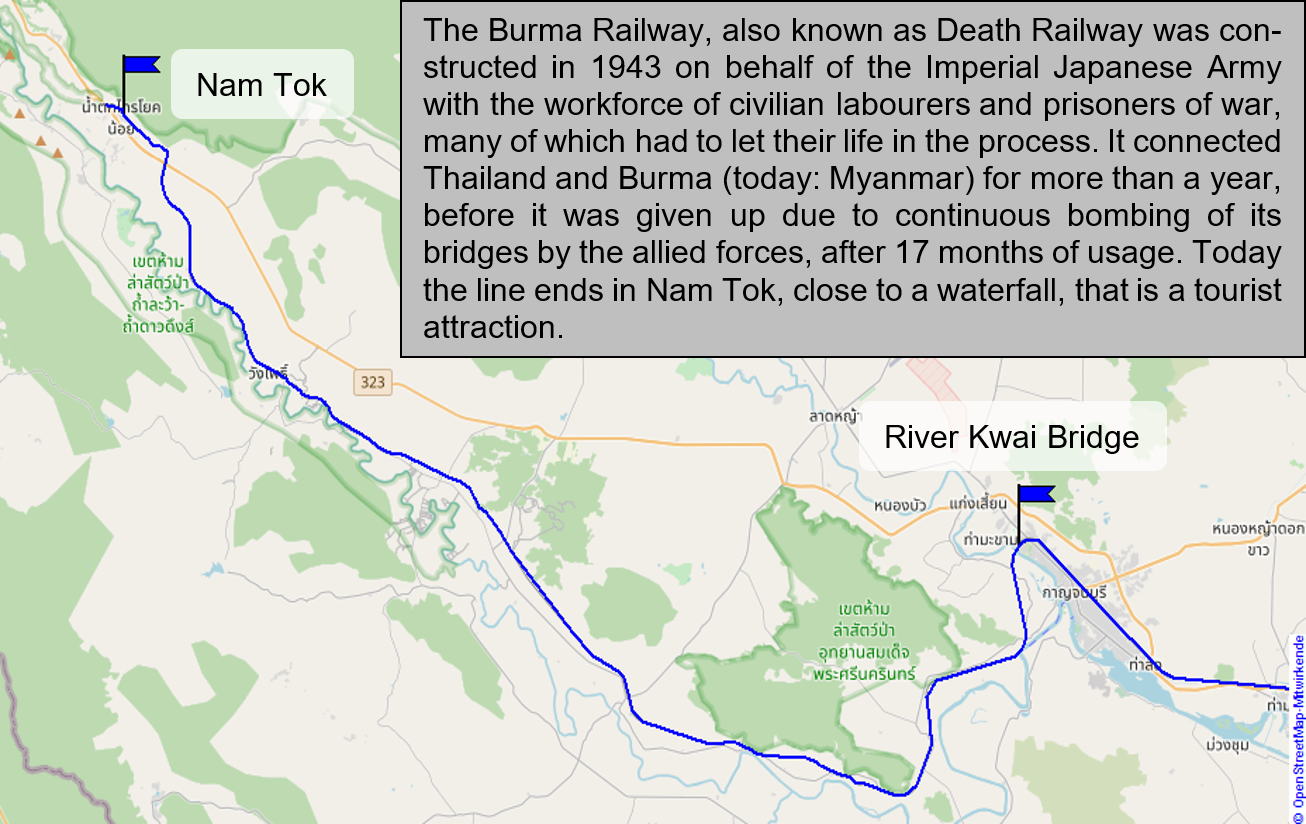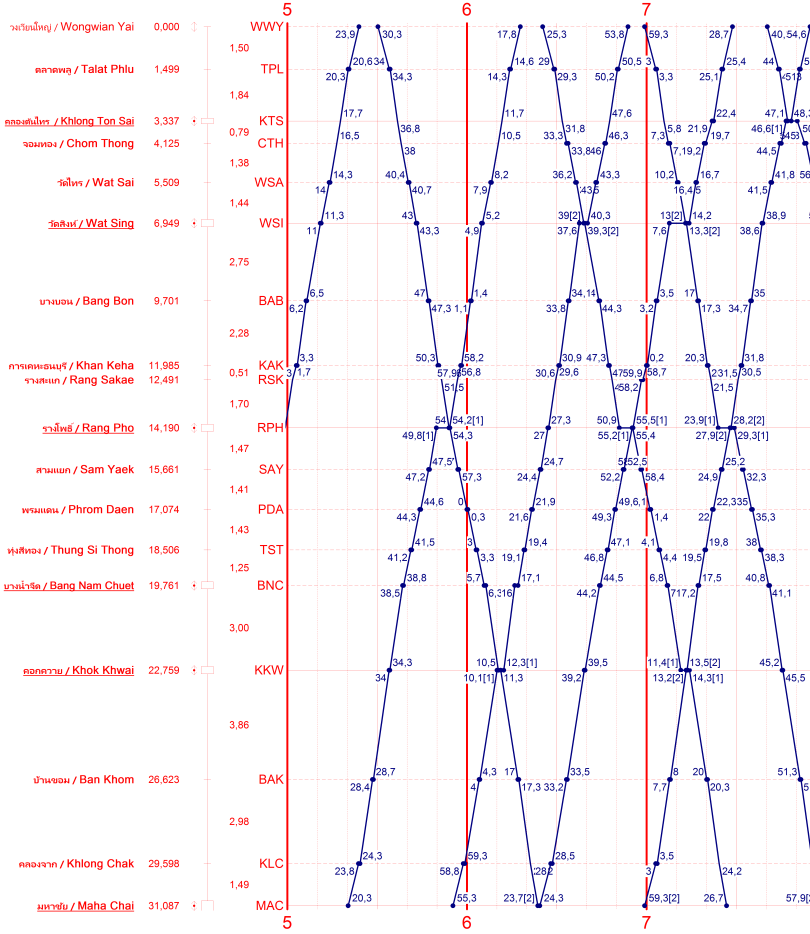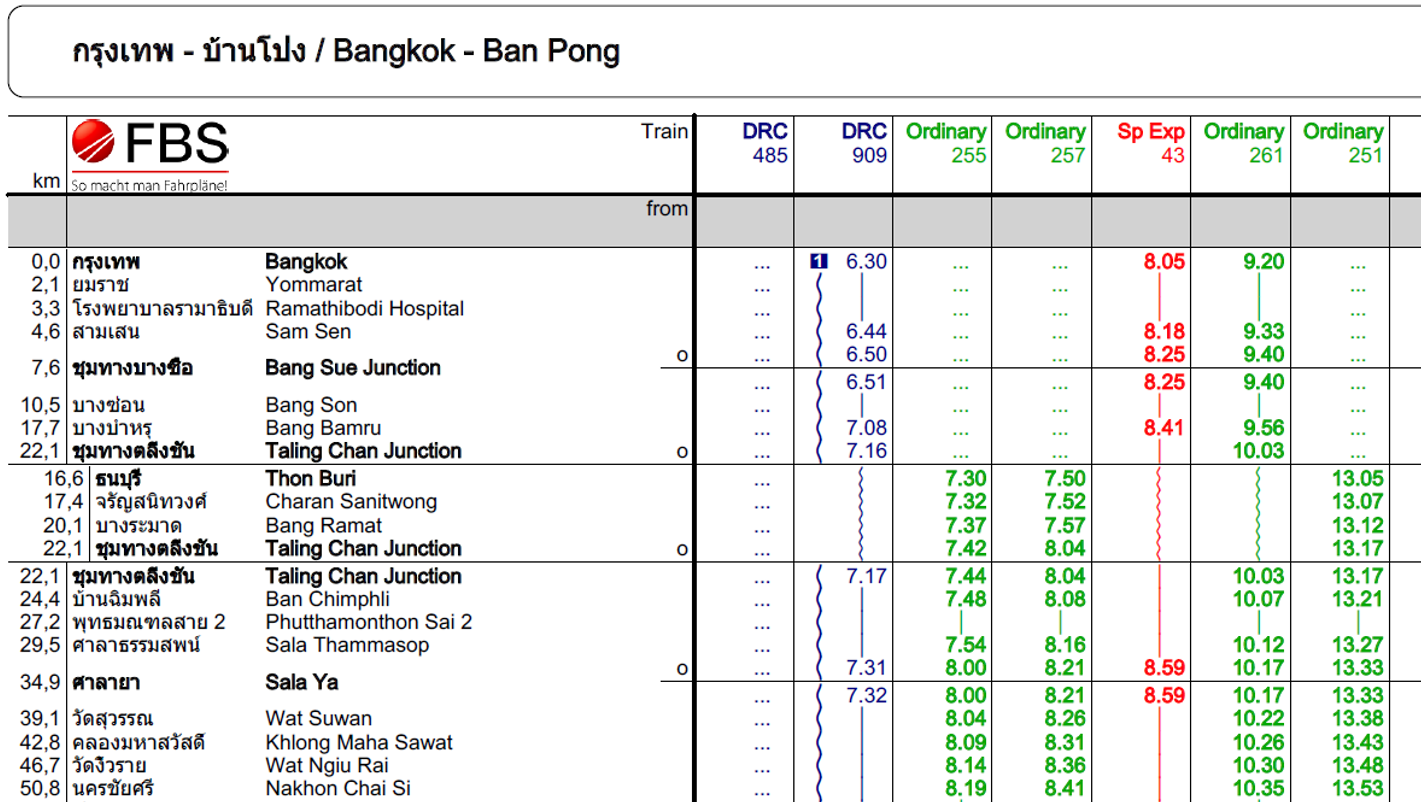FBS-Timetables for Thailand
Creating Graphic Timetables and Other Timetable Documents
About the Railway of Thailand

Railway operations on meter-gauge tracks: Something that is narrow-gauge railway to us, means everyday business in Thailand. On a railway network stretching over a total length of about 4500 km, local trains share tracks with long-distance trains, night trains and freight trains – an example of a small gauge being successfully used to realise great amounts of traffic.
The train lines of Thailand traverse highly diverse areas and landscapes: From flat plains around its capital Bangkok, to mountainous regions in the north and northwest, that are quite a challenge for railways to pass. Thailand is also known for its other specialities considering railway traffic, one particular instance being the line from Bangkok to Mae Khlong, which partly goes through a market, that has to be temporarily demounted, whenever a train is closing in, just to be put back up as soon as it passed.
The train traffic has great relevance in Thailand, which is the reason for a lot of investment in its development and upkeep. The new Bang Sue Grand Station in Bangkok, partially opened in November 2021, is the largest railway station in Southeast Asia. It is a hub for a network of local commuter lines that use elevated tracks, as well as an underground metro system - the integration of long distance trains is to follow in the near future. Another project is upgrading the bulk of the line from Bangkok to Malaysia from single to double track. To put it in a nutshell, there is a lot of development to be expected in the railway traffic of Thailand.
Providing FBS-Infrastructure data

Implementing infrastructure data in FBS is a requirement for the construction of timetables afterwards. A possible source for that can be data extracted from the open-data-platform OpenStreetMap. The infrastructure data of the State Railway of Thailand, such as length of a line, stations, halts, gradient profile and curves can be straightforwardly imported to FBS. That way, a railway network can quickly and easily be modelled to be the basis of further timetable creation.
Constructing Timetabes in the FBS-Graphic Timetable

After implementing the infrastructure data into FBS, the construction of timetables in the graphic timetable can begin. It is common practice in Thailand to view the time axis horizontally, while the distance axis is shown vertically. Of course, that can also be done with FBS. An exemplary excerpt of the graphic timetable from Wongwlan Yai to Maha Chai can be seen on the left. This line section is part of the Mae Khlong Line.
The line to Mae Khlong consists of two parts, that are separated by a river. Both parts are single tracked, thus allowing train crossings only at suitable stations. The first part, from the halt Wongwian Yai in Bangkok to the station Maha Chai, where a ferry can be used, to traverse the Tha Chin River, has five stations, where trains can pass each other.
Information about permitted speeds are usually not published by the corresponding Railway Infrastructure Companies. In these cases, the published run times of operating trains can be alternatively used to estimate the actual line speeds. With these approximations as a basis, the trains’ courses of tracks can be put into the graphic timetable. Alongside an excerpt of graphic timetable of the line from Wongwian Yai to Maha Chai, there is also a graphic timetable of the Southern Line from Bangkok to Nam Tok that can be downloaded at the bottom.
Creating Additional Timetable Related Documents

Based on trains placed in the graphic timetable, FBS can create additional documents related to timetables. These include, among others, costumer’s timetables and circulation plans. There are also some examples that can be downloaded.
Costumer’s timetables can be created in the historical Hot Type layout, but also in the modern Photosetting layout, as seen in the following image. Naturally it is possible to label all stations with Thai fonts or any other established script.
Downloads:
- Timetables in Thailand (booklet) (2.6 MiB)
- Graphic timetable Maha Chai Line (105.9 KiB)
- Graphic timetable Thon Buri - Nam Tok (125.8 KiB)
- Graphic timetable Bangkok - Ban Pong (104.8 KiB)
- Costumer's timetable Wongwian Yai - Maha Chai (44.6 KiB)
- Customer's timetable Maha Chai - Wonwian Yai (44.6 KiB)
- Customer's timetable Southern Line (South) (61.9 KiB)
- Customer's timetable Southern Line (North) (62.6 KiB)
- Circulation plan Mae Khlong Line (77.5 KiB)
